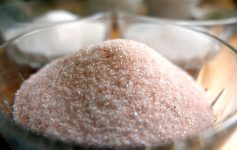
The Fascination Begins Here
A few years ago, some of my team members came to me inquiring about copaiba essential oil. This curious-sounding oil was released by Young Living at their 2010 convention. At that time, a wonderful member who attended the event shared her notes with us. They stated:
This native South American essential oil was extracted from the oleoresin of several different species of Copaifera. These included C. multijuga, C. langsdorffi, and C. reticulata. (An interesting side note is that we were told in 2010 there were 35 species. In 2001, according to this article, there were 34 species. Comes to show you that more is always being discovered in nature!)
“Copaiba is 70-90% sesquiterpenes which cross the blood brain barrier (increases the oxygen into the cells). With the high levels of beta caryophellene, gamma elemene, and alpha humalene, it was used in the past to aid the natural processes of redness and irritation of body tissue…
Traditionally, copaiba was used in various Native American remedies and to aid digestion and support the body’s natural response to injury or irritation.
Young Living sourcing specialists have traveled the world sampling different copaiba essential oil samples. Each batch was put through state-of-art Gas Chromatograph and Mass Spectrometer test. Gary Young selected species of Copaifera from South America to maximize levels of beta caryophyllene, the key active ingredient in the essential oil.”
I hadn’t really researched this strange sounding oil more fully until recently. This was because I had such luck with many other, more familiar essential oils. Being an essential oils geek, and knowing of the importance of being open-minded, I dove into the literature for my team members. I was amazed with what I found and provided a summary for them in a blog post.
I discovered that it had been studied quite a lot! Copaiba, was in fact, noted for its ability to soothe tissue irritation, inhibit unwanted organisms and critters, ease discomfort, and assist with healthy cellular growth patterns. I also read some in vitro and in vivo studies (petri dish and animal studies, respectively) that suggested this oil’s ability to modulate oxidative stress, provide neuroprotection against induced brain damage in rodents, protect against chemotherapy side effects in mice, and to calm down hyperactive four-legged critters.
Due to the many references on PubMed regarding on copaiba, in order to preserve my readers’ sanity for “getting to the point” (not a strong point for me), I provided further brief source listings for: its effect on dental pathogens, endometriosis, wound healing, lung damage, skin blemishes in humans, and medication-induced liver damage. You can read my first full review here.
I was so grateful that I had an opportunity to get my nose in the research, because just after I wrote my “summary of findings,” I threw out my back! (Combination of ego-driven yogic moves and stress.) Guess what oil I grabbed that assisted me back to sitting in comfort? Copaiba! You never know how your actions to support others will end up helping you, right?
My “New Discovery”
Recently, I picked up my fascination with this essential oil again, for a few reasons. It started when I found a Tropical Plant Database that listed Copaiba as I was poking around google one day. It was sourced from a book by a board certified naturopathic doctor (my people) who was also an Amazon plant researcher. Here is what I can highlight from it that is compliant with FDA claims:
The resin contains up to 15% volatile oil; the remaining materials are resins and acids. The active biological properties of copaiba resin are attributed to a group of phytochemicals called sesquiterpenes (over 50% of the resin may be sesquiterpenes), diterpenes, and terpenic acids. These chemicals include caryophyllene, calamenene, and copalic, coipaiferic, copaiferolic, hardwickic, and kaurenoic acids. Several of these chemicals are novel ones found only in copaiba. Copaiba resin is the highest known natural source of caryophyllene, comprising up to 480,000 parts per million. Caryophyllene is a well known plant chemical…
Let’s stop there….
Caryophyllene, Oh My!!
This amazing terpene is what brought my attention even more into the “google search crazies.” Why? Have you seen the recent research findings, controversial legalization, and classification of a certain very debated herb?
Well, surprisingly, essential oils have synergistic and distinct actions with this plant and it has to do with compounds such as caryophyllene. Furthermore, essential oils are without the drawbacks associated with this hotly debated medical herb.
Curious?
Learn more about copaiba and why this connection is interesting here, in Part II….
Disclaimer
This information is applicable ONLY for therapeutic quality essential oils. This information DOES NOT apply to essential oils that have not been tested for purity and standardized constituents. There is no quality control in the United States, and oils labeled as “100% pure” need only to contain 5% of the actual oil. The rest of the bottle can be filled with fillers and sometimes toxic ingredients that can irritate the skin.
This material is for information purposes only and is not intended to diagnose, treat, or prescribe for any illness. You should check with your doctor regarding implementing any new strategies into your wellness regime. These statements have not been evaluated by the FDA.



